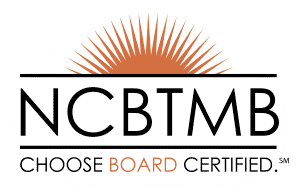Photo by Aaron Burden on Unsplash
Stress reduction is crucial for everyone during the back-to-school season. Lowering stress for students not only safeguards their mental and emotional well-being but also supports optimal cognitive functioning. Alleviating stress can help students maintain focus, memory retention, and problem-solving abilities. Stress makes it more difficult for students to thrive academically, socially, and personally (Levings 2021). Lowering the stress of parents during the back-to-school season is important too. According to the American Psychological Association, “Parents who deal with stress in unhealthy ways risk passing those behaviors on to their children. Alternatively, parents who cope with stress in healthy ways can not only promote better adjustment and happiness for themselves but also promote the formation of critically important habits and skills in children.” The mental health of a parent can greatly affect a student’s learning career. The same goes for teachers; according to a 2023 study, “Stress and burnout can have a negative impact on teachers and, very often, on the students they teach” (Agyapong et al. 2023). Stress reduction is important for every individual within a school environment.
School-Time Relaxation Ideas for Young Students (4-12)
For young students, starting school may be both thrilling and overwhelming. Ease their tensions with a few tried-and-true wellness strategies. Remember that sometimes children will experience relaxation in different ways.
- Art and Coloring: Provide coloring sheets or art supplies for students to engage in a quiet, creative activity. This activity can help each student express themselves and find relaxation through art. Keep the art projects open-ended so that students can let their imaginations run wild.
- Quiet Corner: Create a designated “quiet corner” in the classroom or at home where students can retreat when they need a moment to be alone or relax. Fill the space with soft cushions, fidget toys, and soothing decorations to create a calming environment.
- Breathing Buddies: Have the student choose a soft toy to be their “Breathing Buddy”. The student will place the toy on their belly and watch it rise and fall with each breath. Read this article on Breathing Buddies for in-depth instructions.
School-Time Relaxation Ideas for Teenage Students (13-18)
It’s vital to remember that teenage students may be coping with more complicated emotions and anxieties than younger age groups, so it’s crucial to provide a safe and encouraging environment where they feel comfortable experimenting with these relaxation techniques. Offering a range of choices makes sure teenage students can select the methods that resonate with them the most.
- Positive Affirmations: Teach students about positive affirmations and how repeating affirming statements can boost their confidence and overall well-being. Encourage the student to use sticky notes or a journal to keep their affirmations.
- Digital Detox Time: Educate teenage students about the importance of taking breaks from screens. Encourage designated times to disconnect from their devices. School work, social media, and the constant pressure to avoid FOMO can be overwhelming. This wellness practice will benefit teenage students throughout their entire learning career.
- Social Support Groups: Encourage or create peer support groups where teenage students can discuss their challenges, share advice, and provide emotional support among themselves. If you are in the Jackson area, a great place to find community support is through our local library.
School-Time Relaxation Ideas for College Students
College students often face a unique set of challenges and stressors, so it’s important to find relaxation ideas that can easily fit into their routines. By providing a range of wellness and relaxation options, college students are empowered to find strategies that work best for their individual needs.
- Mindful Morning Routine: We encourage college students to start their day with a mindful routine, incorporating activities like stretching, deep breathing, and setting positive intentions. A morning routine will add a sense of regularity to a hectic schedule of school, work, family, sports, and social activities.
- Counseling Services: College students should take advantage of available counseling and mental health resources on campus. Many counseling programs for college students are free or low-cost.
- DIY Relaxation Kits: Create a relaxation kit with items like scented candles, fidget toys, comfortable clothing, essential oils, and soothing teas.
School-Time Relaxation Ideas for Non-Traditional Students
Non-traditional students often juggle multiple responsibilities alongside their education, and will benefit significantly from relaxation techniques. The key for non-traditional students is flexible wellness strategies that can be integrated into their busy lives. By acknowledging the unique challenges they face, non-traditional students can succeed academically while also taking care of their well-being.
- Time-Blocking Techniques: Non-traditional students are more likely to have difficult schedules. By setting aside specific relaxation breaks into their daily routines using time-blocking or the Pomodoro technique. The Pomodoro technique asks the student to work for long intervals followed by short breaks. Use this timer app to do the Pomodoro technique.
- Hybrid Relaxation Techniques: Find times to practice relaxation techniques while performing everyday tasks, such as deep breathing while doing household chores or doing daily affirmations while brushing your teeth. This is called habit stacking and can be a helpful tool for any busy student.
- Recognizing Achievements: Non-traditional students should celebrate their accomplishments, no matter how small. Many non-traditional students are on a unique path and their success may look very different. Non-traditional students must find a sense of pride and motivation in the chaos.
School-Time Relaxation Ideas for Parents
Parents often experience a mix of excitement and stress during the back-to-school transition. These relaxation techniques will help parents relax so that they can help their students succeed.
- Massage Therapy: Schedule regular massage therapy sessions. It is important for parents to relax during the back-to-school season as it may help alleviate stress and tension. Massage therapy rejuvenates the body and mind, allowing parents to navigate the demands of back-to-school season.
- Information Sessions: Parents may find it useful to find or request information on specific resources. This may vary from parent to parent, but some examples of various support services include counseling, tutoring, and extracurricular activities, available for their children. Parents may also wish to establish clear communication channels with the school, to request updates, ask questions, and voice concerns. Requesting this sort of information early may save stress down the line. To get access to general parenting information, visit Growing Great Families Wyoming.
- Sleep Hygiene: To enhance sleep quality, establish a healthy sleep schedule. A restful night’s sleep will significantly boost parents’ motivation and energy to support their students’ academic success during the school year.
School-Time Relaxation Ideas for Teachers
A happy and effective learning environment in the classroom depends on the well-being of the teachers. The quality of education a teacher delivers is directly impacted by their mental health. Teachers can succeed in their crucial profession and contribute to a healthy and effective learning environment by developing a culture of wellness and self-care within the school community.
- Massage Therapy: Schedule regular massage therapy sessions. By offering relief from physical tension and mental strain, massage empowers educators to approach their classrooms with renewed energy and a focused state of mind, ultimately enhancing their ability to inspire and educate their students.
- Resource Sharing: Find or create a shared platform where teachers can recommend books, articles, and resources relating to school topics or information on relaxation and wellness.
- Gratitude Practices: Practice daily gratitude to cultivate a positive outlook and reduce stress. Try keeping a gratitude journal to record the thing you are grateful for throughout the school year.
Moving Forward
Students, parents, and teachers alike can work towards creating an environment that prioritizes wellness and self-care. The items listed below may be useful in any school or community.
- Flex Days: Implement occasional “flex days” where teachers and students have the option to work remotely, allowing them to recharge and work at their own pace.
- Orientation Events: Host orientation sessions for parents and students to familiarize them with the school environment, staff, and resources to reduce stress before the first day of school.
- Regularly Offer Workshops: Provide monthly workshops on self-care and well-being tailored to the needs of students, parents, or teachers.
- Support Groups: Establish peer support groups or wellness committees where students, parents, or teachers can share challenges, strategies, and resources.
- Community Building Events: Arrange events that promote social interaction among students, parents, or teachers to foster a sense of belonging and support. If you are in the Jackson area, a great place to find community support is through our local library.
- Resource Library: Establish a library with books, articles, and videos related to wellness and education that students, parents, and teachers can borrow.
- Clear Communication Channels: Establish clear communication channels between students, parents, and the school to provide updates, answer questions, and respond to concerns.
- Wellness Initiatives: A great framework for a school wellness program can be found at the Teton County School District website.
During the hectic back-to-school season, taking care of ourselves and each other is paramount. For students, parents, and teachers, the simple acts of relaxation and self-care can transform the back-to-school journey into something truly amazing. Through practices such as massage therapy, mindfulness techniques, resource sharing, and fostering support networks, a culture of relaxation and self-care can permeate the educational system to create a positive and nurturing environment for everyone involved. If we each take small steps to improve ourselves, we can create big changes towards wellness and success.
Bibliography
Agyapong, Belinda, Pamela Brett-MacLean, Lisa Burback, Vincent Israel Opoku Agyapong, and Yifeng Wei. 2023. “Interventions to Reduce Stress and Burnout among Teachers: A Scoping Review.” International Journal of Environmental Research and Public Health 20 (9): 5625. https://doi.org/10.3390/ijerph20095625.
American Psychological Association. 2022. “Managing Stress for a Healthy Family.” Apa.org. 2022. https://www.apa.org/topics/stress/managing-healthy-family#:~:text=Parents%20who%20deal%20with%20stress.
Bergstrom, Chris. 2017. “Mindfulness for Kids – Teddy Bear Belly Breathing Aka Breathing Buddies.” Blissful Kids. March 15, 2017. https://blissfulkids.com/mindfulness-exercises-for-kids-teddy-bear-belly-breathing/.
Levings, Kenton. 2021. “Stress Management for Students: The Importance of Stress Management in K-12 Classrooms.” Insights to Behavior. October 14, 2021. https://insightstobehavior.com/blog/student-stress-management-signs-tips/.
Scott, S J. 2017. Habit Stacking : 127 Small Changes to Improve Your Health, Wealth, and Happiness. Mahwah, Nj: Oldtown Publishing.
Sheldon, Robert. 2022. “What Is Pomodoro Technique Time Management?” WhatIs.com. September 2022. https://www.techtarget.com/whatis/definition/pomodoro-technique#:~:text=The%20Pomodoro%20Technique%20is%20a.




